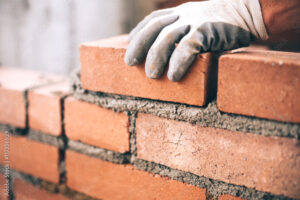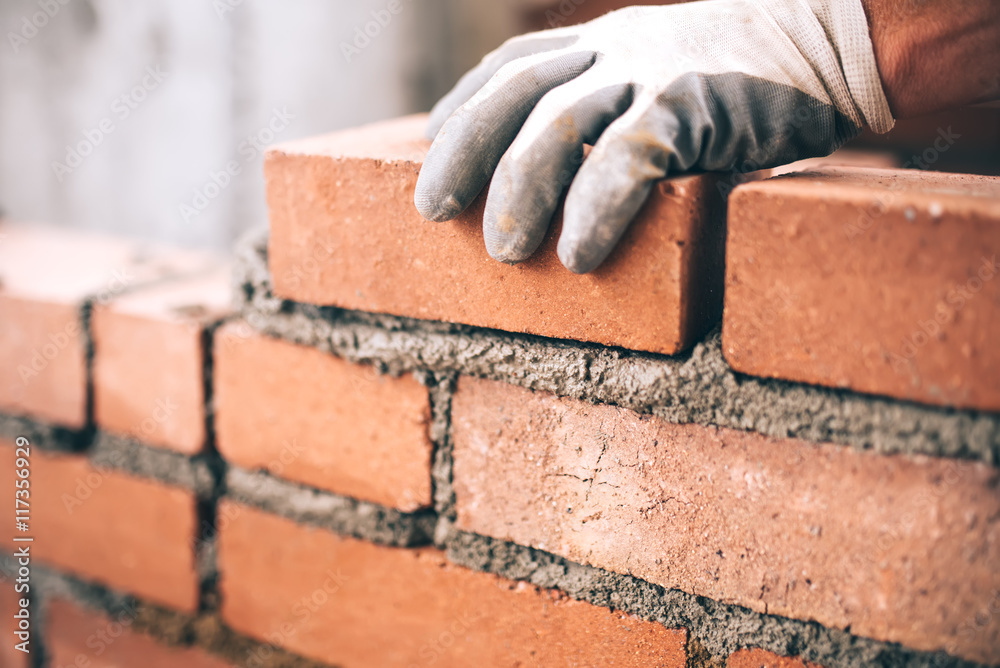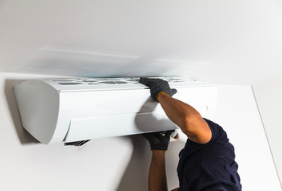Masonry structures work primarily in compression perpendicular to their bed (horizontal) joints. Unfortunately, masonry relieving angles in modern buildings often experience damage as a result of poor design and construction. Inadequate design and installation of steel shelf angles can lead to spalling, cracking, and staining of masonry veneer, water infiltration through the wall assembly, moisture-related damage, corrosion of fasteners and their associated components, and other problems. Go to https://masonrycharleston.com/ for more details.

Inadequate design, construction, and maintenance of shelf angles supporting masonry veneer on structural framing cause spalling and cracking of the masonry, corrosion of the steel angle, deterioration of interior finishes, and water leaks. These issues can be caused by various factors such as grade sizing, improper shimming, insufficient masonry reinforcement, using mortar rather than concrete for filling the joints, and lack of expansion space.
Relieving angles are a key component of brick, stone, and other heavy cladding systems in buildings that require wide openings, such as ribbon windows. These angles take on the load of the masonry, taking the weight off the structural framing members in a building. These angles must be properly designed, detailed, and sized to meet the design requirements of the building code for strength and deflection.
Traditionally, lintels and shelf angles are fabricated from steel, providing superior strength, durability, and corrosion resistance to other materials such as concrete and wood. However, a new generation of engineered materials, such as GFRP (glass fiber reinforced polymer), has emerged that can offer the benefits of steel at a lower cost and with reduced environmental impacts. These materials are used for many applications, including lintels and support for cladding systems.
Engineers size lintels and support angles to meet the building codes’ strength requirements. They must be able to limit the deflection between support points due to uncategorized dead and live loads to less than L/600 or 0.3″ and resist rotation of no more than 1/16″.
The sizing of the angle depends on the thickness of the masonry, but in most cases, it is set at two-thirds of the maximum thickness of the wythe. The tips are secured to the concrete or masonry structural system through anchor bolts. A detailed engineering calculation must be made for each type of attachment, and these calculations can be done using either a global FE model or a kinematic analysis.
The materials ‘ quality is important because the masonry-bearing wall is exposed to the elements. All frame members should be checked for size, straightness, edges, wood material, and color, and they should be free of shakes, dead knots, and decay. They should also be tested for flexural, shear, and compression strength.
Aesthetic considerations and design requirements for masonry building walls often require the addition of horizontal expansion joints and using shelf angles. These support structures help to distribute the weight of a barrier to various locations in the system so that one spot does not carry all the load on its own. They are often necessary for high-rise buildings and can be used with lintels or other structural components. To prevent these supporting elements from affecting the overall strength of the wall, they must be designed and detailed properly. Shelf angles must be connected to the concrete or masonry structural systems through anchor bolts. The bolts must be sized appropriately to prevent deflection due to uncategorized dead and live loads. The spacing of the anchors must also be examined, as a gap between anchors may allow movement that will weaken the veneer.
The shelf angle design is important to a brick wall’s overall stability. It should be placed where the maximum lateral force is expected to be applied, as this will determine the amount of energy that must be transmitted through it. It will be determined by the slope of the stress plane concerning the plane of the bed joints of the masonry. A low pitch of the stress plane will result in a higher tensile strength than what might be assumed for a given wall.
Traditionally, masonry buildings had thick load-bearing walls that carried the full weight of the building and provided support for openings such as doors and windows. Steel lintels or masonry arches spanned openings in these walls. However, skeleton frame building construction has allowed for wide ribbon windows across entire sections of a façade. This large window type requires a thin wythe of brick, stone, or other masonry to span the whole width of the opening. It can put a lot of weight on the masonry, and the support system must provide a means for this masonry to transfer its importance to the major elements of the building structure.
Moisture accumulation in masonry walls can cause physical and chemical damage to building materials and deteriorate the efficiency of building mechanical systems. Controlling moisture is, therefore, crucial to ensuring the longevity and durability of the cladding system. Moisture ingress is often caused by wind-driven rain (WDR), and a significant source of moisture ingress is water penetration through the interface between masonry and the building frame. It can cause many issues, such as ineffective insulation, freeze-thaw damage, biodeterioration, indoor mold growth, and structural failure.
The most common way to prevent WDR-induced moisture ingress is to ensure that the masonry is fully sealed at all edges, including the junctions with the building frame. It can be achieved in new buildings using a silicone-based sealant, e.g., Dow Corning® ProFlex® Silicone, around all penetrations through the masonry façade. Alternatively, a breathable membrane can be used to ensure that the wall is breathable and that moisture infiltrating the masonry can escape.
Another important factor in preventing WDR-induced moisture ingress is to ensure that the masonry is not attached to the structural steel elements in a way that will compromise the performance of the thermal envelope. It can be done using a structural thermal break assembly compatible with the masonry material or by incorporating a masonry insulating shim between the shelf angle and the concrete surface.
Masonry wall assemblies are usually constructed from different types of materials, and each material has its unique behavior in response to temperature, moisture, elastic deformation, and settlement. Designing, creating, and maintaining a masonry wall with all the components required for optimum performance is essential.
The main components of a masonry wall include concrete blocks, mortar, grout, reinforcement (vertical, horizontal, and joint), insulation boards, shelf angles, and veneer ties. Previous studies have shown that properly selecting and constructing these wall components can improve the overall R-value of a masonry wall.
The materials and artistry are the most critical factors for achieving good moisture resistance in a masonry wall. The masonry material’s quality, especially the mortar, is key to resisting moisture ingress. It is also crucial to ensure no cracks in the masonry wall and that the cannon is well-bonded to the masonry units.
The type of material used for masonry anchors and shelf angles is an important factor in the thermal resistance of masonry walls. A concrete block masonry wall’s thermal performance depends on many factors, including insulation, air gaps, and conductive structural components (such as concrete block ties and shelf angles). These elements’ effectiveness must be considered to meet stringent code requirements for masonry construction.
The concrete block masonry tie is a masonry structure’s most common conductive structural element. Using stainless steel, which has a thermal conductivity three times greater than carbon steel, can significantly reduce the effect of this conductive element. However, this method is usually only considered feasible in high-rise buildings and can be cost-prohibitive.
A better solution is to use a more resilient, corrosion-resistant material such as galvanized steel for these elements. It improves the thermal performance of masonry structures and enhances corrosion resistance in marine environments where exposure to salt is frequent.
Other subtle design issues that can impact the thermal performance of a masonry wall include the choice of material for concrete block masonry ties, the amount of exterior insulation, and the location of shelf angles in the backup wall structure. These elements must be designed to minimize thermal bridging, which is the primary cause of low masonry wall R-values.
Insulating concrete may be placed in the backup wall structure behind the shelf angle, or continuous insulation can be inserted between the backup wall structure and the masonry veneer to improve the R-value of a masonry wall. The choice of a particular insulation strategy is dependent on project-specific considerations.
Steel shelf angles provide vertical support for masonry veneers and often act as an effective thermal break. However, the effectiveness of a shelf angle in reducing a building’s U-value depends on its location and connection to the backup wall structure. Studies conducted by Finch et al. found that directly attached shelf angles reduce a masonry wall’s R-value by up to 55%. In contrast, shelf angles supported with intermittent knife plates or HSS tubes result in a much less significant reduction (12%).

